My Dad gave me his old winter tires to use this year, but one is completely flat! How do I inflate them?
Will Baldwin · Answered on Nov 09, 2021
Reviewed by Shannon Martin, Licensed Insurance Agent.
That’s very nice of your Dad, winter tires are a smart decision!
The first thing you’ll want to do is inspect the tire for damage. Since the tire is flat, you’ll want to ensure it’s possible to fix any damage. If it is, you have a couple of options. The first is a basic repair kit or remove the tire from the rim and patch it.
If the air is holding at the correct pressure, you should be ready to go!
Something else that could help prepare for winter is a roadside assistance membership with Jerry.
Jerry’s membership provides you with industry-leading roadside assistance, including benefits like towing, lockout service, and a mechanics hotline. To find out if you’re eligible, you can check the app or call one of our friendly agents. You may qualify for a special rate of $50 for your first year!
MORE: What to do if your tire blows out?
Car MaintenanceCar OwnershipCar RepairCar Tires
View full answer
WHY YOU CAN TRUST JERRY
Jerry partners with more than 50 insurance companies, but our content is independently researched, written, and fact-checked by our team of editors and agents. We aren’t paid for reviews or other content.
Browse More Content
Fuel Injector Replacement Cost Estimate
Clean Windshield Washer Tubes and Jets Inspection Cost Estimate
Fuel Filler Cap Replacement
What To Do If Your Parking Brake Won’t Engage
Coolant Temperature Switch (Sensor) Replacement Cost Estimate
Mercedes-Benz S 500 4Matic Insurance Cost
Subaru Legacy 3. 0R Limited Insurance Cost
0R Limited Insurance Cost
Chrysler Pt Cruiser Touring Insurance Cost
Saturn Sw1 Insurance Cost
Ford Taurus Sho Insurance Cost
Singers Glen Car Insurance
Nederland Car Insurance
Berea Car Insurance
Dardanelle Car Insurance
Pittsfield Car Insurance
I haven’t fully vacuumed my car since I bought it. I know there are crumbs lurking between my seats. How can I vacuum between my car seats?
Will Baldwin
Nov 09, 2021
I live in a rural area and the closest bank is about 45 minutes away. I want to get a car loan, but I don’t want to go through the hassle of going to the bank several times. Where can I apply for a car loan online?
Eric Schad
Nov 09, 2021
I’m a frugal person, so I don’t like paying more than I have to for just about anything. I’m in the market for a new car and I want the best interest rate possible. How do I get a low APR on a car loan?
I’m in the market for a new car and I want the best interest rate possible. How do I get a low APR on a car loan?
Eric Schad
Nov 09, 2021
Browse All Questions
Find instructions for replacing the radio in a 2012 Nissan Altima here, plus tips to protect your sound system and save on insurance.
Kathryn Mae Kurlychek
Sep 28, 2022
The 2022 Toyota Venza comes with five seats and does not offer a third row of seats.
Kathryn Mae Kurlychek
Sep 22, 2022
The street cred you get by driving a 2014 Cadillac Escalade makes it easier to ignore some of its interior shortcomings.
Kathryn Mae Kurlychek
Aug 30, 2022
road safety
National General
Elephant Insurance
Uninsured Motorist Protection
Gap Insurance
Rental Car Insurance
Insurance Shopping
Car Modifications
Mileage
Crash Test Ratings
Grundy Classic Car Insurance
Acts of God
Metromile
Nevada
Flood Insurance
Subrugation
Electric Vehicles
All-Wheel Drive (AWD)
Auto Loan Payments
Direct Auto Insurance
Car Damage
Jumpstarting
Chrysler
Swyfft Insurance
Penalties
Distracted Driving
Safeco
Emergency Brakes
No long forms
No spam or unwanted phone calls
Quotes from top insurance companies
Find insurance savings — it's 100% free
Toyota
Hyundai
Mercedes-Benz
Subaru
Chevrolet
Mitsubishi
Whether you’ve just noticed that your tire is flat or are trying to reinflate an old tire, you may be wondering if there’s anything in particular you should do differently, such as putting air in the tire yourself.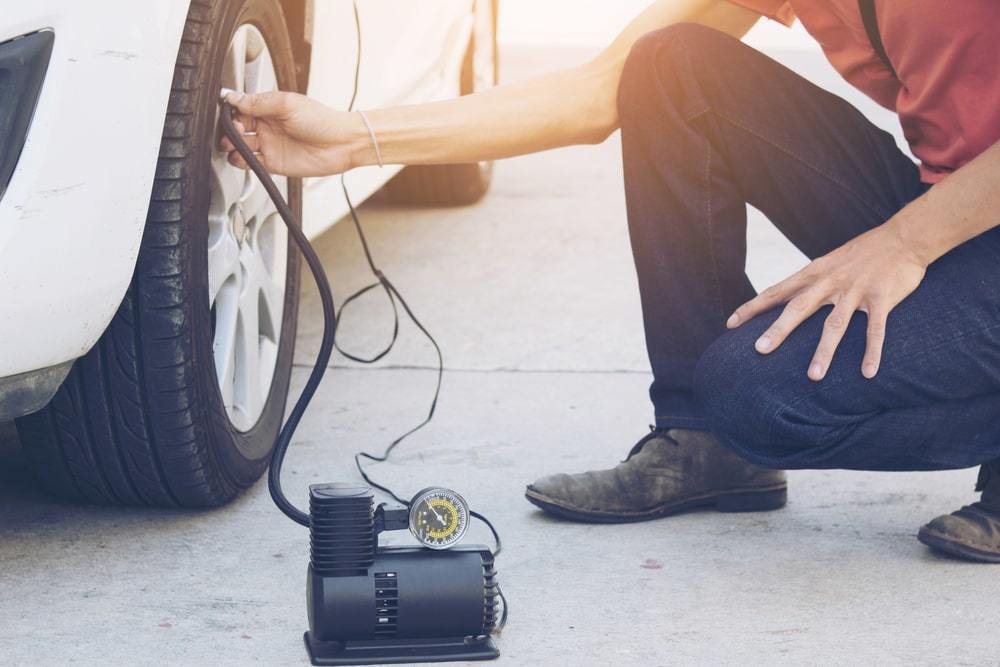
So, can you put air in a flat tire? If you’d like to find out, keep reading to see what I learned on this topic!
You can put air in a flat tire if it’s been deflated, but if there’s a puncture, the tire won’t hold the air. Slow leaks will continue to leak as well, eventually leading to another flat tire. Usually, there’s no reason to fill up a flat tire unless it has been purposefully deflated.
For more information on filling up flat tires, as well as a few tricks if you’re having difficulties, keep reading below for more useful facts and tips!
Being able to inflate a flat tire largely depends on why the tire was flat to begin with. For example, if there’s a large puncture in the tire, filling it back up with air probably won’t do anything, and you’ll simply end up with another flat tire.
However, if there’s a slow leak, then reinflating the tire will cause it to fill back up, though the air will slowly leave the tire overtime, and how quickly the air will leave depends on how fast the leak is.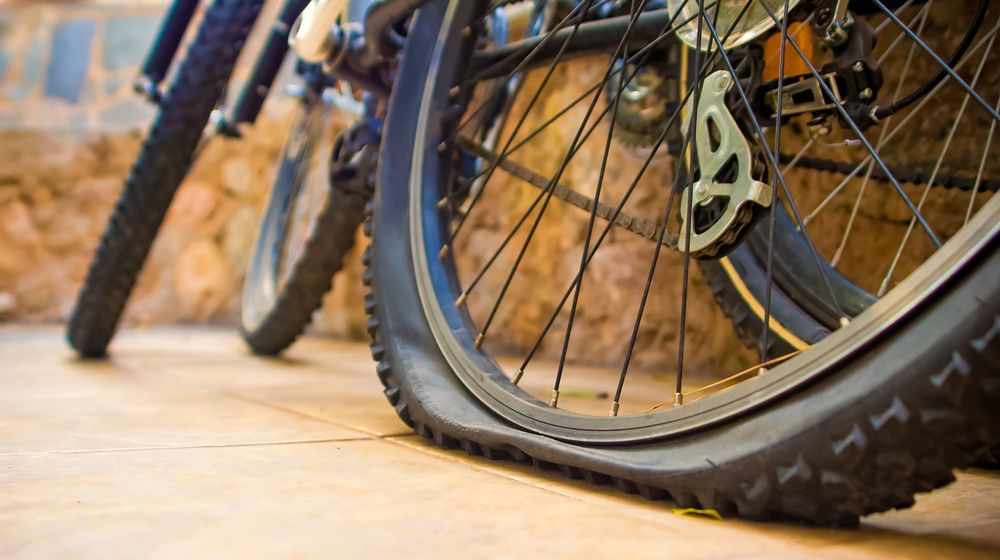
If you find an older tire that has lost all its air, you’ll likely be able to reinflate it. However, you’ll also have to consider whether such an old tire is safe to use.
Generally, all tires are unsafe to use after about six years. However, if the tire was stored improperly, it may not actually last that long (for instance, those that are stored outside are often worn down much faster by UV rays).
With that said, tires that were simply deflated can easily be filled back up. Sometimes, you’ll need to press on the tire to prevent the valve from recessing. Otherwise, you may have trouble attaching the pump properly.
Usually, you’ll be able to inflate a flat tire without much of a problem as long as there isn’t a puncture.
Typically, driving on a flat tire isn’t safe, and if your tire has no air at all, then driving on it can cause damage.
Additionally, you may not be able to fill the tire back up after driving on it with improper pressure.
Furthermore, driving on a flat tire is dangerous because the pressure isn’t high enough, and it won’t be able to get the proper grip.
As well, your tire won’t provide the same amount of control that a fully inflated tire would. In the end, this makes an accident much more likely.
However, if your tire has a slow leak, you may be able to drive on it for a bit. With that said, you should stop for a moment every few miles to check on the pressure, and if the tire ever becomes completely flat, you should stop driving on it.
As well, your tire won’t drive well with less pressure than suggested. Therefore, even a partially flat tire should be carefully driven on, otherwise, you may be at an increased risk of an accident.
Inflating a flat tire at home is slightly more difficult than inflating an already inflated tire. After all, the valve will often be recessed into the rubber, which will make it more difficult to inflate completely.
However, you can typically press on the area around the valve to hook the compressor onto it completely. Be sure to check the pressure as necessary, and if needed, push the needle at the center of the valve to let the air out.
However, you shouldn’t attempt to inflate a tire that’s damaged, as the punctured tire won’t hold air. However, it could potentially damage the tire more if you inflate it before repairing it.
You shouldn’t try to drive with a flat tire at all, as there are several problems that can occur if you attempt to drive with a flat tire.
First off, you may damage the tire beyond repair, and even if it isn’t all that damaged, driving on it while flat will often cause more damage. As you might imagine, this may cause you to be unable to repair it completely.
Second, driving on a flat tire is very dangerous, because they don’t have grip or traction. Plus, they’re difficult to control and will act much differently than your other tires, which make accidents much more likely.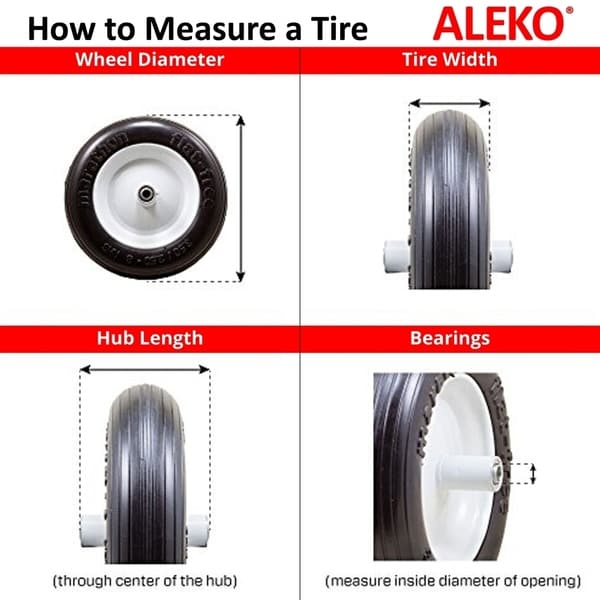
To learn more tires, you can also see our posts if you can plug a run-flat tire, how long can a car sit on flat tires, if you can drive on a flat tire, and how common are flat tires.
You can put air in a flat tire by hooking up an air compressor to the valve and filling it to the appropriate level.
In some cases, you may need to press on the tire around the valve to get the compressor tip connected correctly. However, if the tire is flat due to a puncture, there is little reason to refill it, as it will simply lose the air again.
The problem of depressurization of pneumatic tires, has not yet been solved. Therefore, the question of how to pump up a car wheel with a compressor remains relevant. It's always annoying to find your car with a flat tire. We must hurry on business, and then there is this misfortune. Regular use of the electric pump makes the driver trained.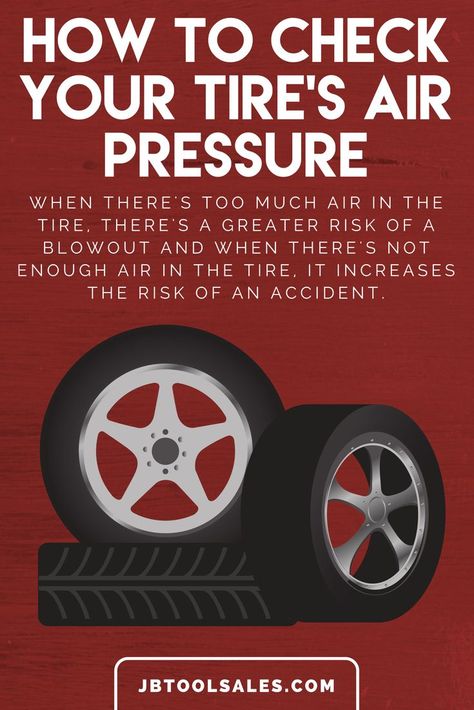 But the rare use of a compressor, or a complete lack of experience, can puzzle the car owner.
But the rare use of a compressor, or a complete lack of experience, can puzzle the car owner.
Car compressor for inflating wheels, is an electric motor with a piston and a cylinder. To supply power to the electric pump motor, a long wire with a plug is used. The design of the plug is designed for quick connection to the cigarette lighter socket. Simply plug into the cigarette lighter and then press the toggle switch on the compressor. Everything should work.
What if the cigarette lighter does not work? A new nuisance appears due to a blown fuse. You can open the fuse box and check the elements for the integrity of the threads. If the reason turned out to be this, then this is easily fixed by installing a new fuse.
The cigarette lighter continues to refuse to work, and there is no time to search for the causes of the problem. You will have to connect the compressor directly to the battery. To do this, cut the plug from the cable.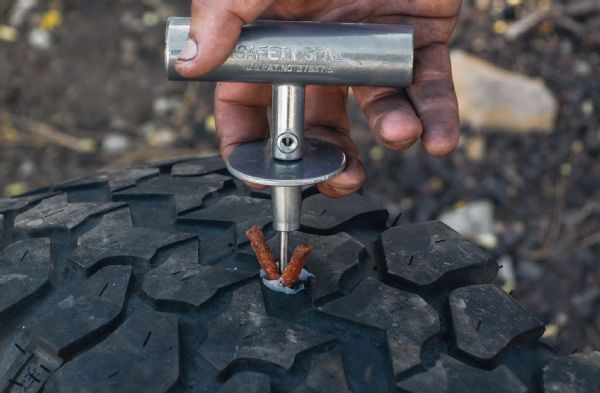 Next, strip the ends of the wires so that the strand can be looped around your finger. These will be the clamps. We dress improvised terminals on the battery (red wire "+", black "-"). We turn on the compressor. If the battery is old, it is recommended to pump the wheels with the engine running. In the future, after repairing the cigarette lighter, the cut off plug must be connected to the cable, and the wire twists must be insulated.
Next, strip the ends of the wires so that the strand can be looped around your finger. These will be the clamps. We dress improvised terminals on the battery (red wire "+", black "-"). We turn on the compressor. If the battery is old, it is recommended to pump the wheels with the engine running. In the future, after repairing the cigarette lighter, the cut off plug must be connected to the cable, and the wire twists must be insulated.
If there is a compressor, but there is no experience of pumping wheels, then exercises should be carried out. To do this, it is enough to know the rules that will help you act in a certain sequence:
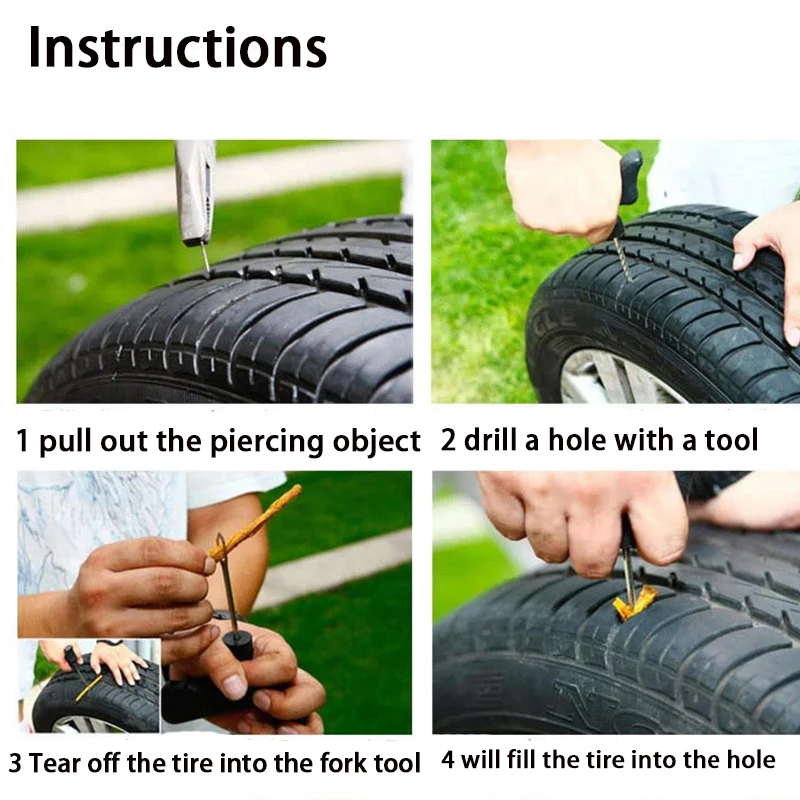
Pump hose end with lock. In the vertical position, the valve is closed and the tip is ready to be fitted onto the wheel fitting. After moving the lever to a horizontal position, the tip is fixed on the fitting, opening the nipple for air supply.
Each car is designed to use a specific tire size. In addition, tires must have working pressure. To inform the car owner about the type of tires and the air rate, the automaker sticks an information label in the driver's doorway. Sometimes, a decal is placed in the passenger doorway. The content is arranged in the form of a table, which will indicate different pressures in the wheels for winter and summer operation.
Do not wait until the air has completely leaked from the wheels. It is recommended to check the sufficiency of tire pressure every two weeks. This will reduce rubber wear, since even minus 0.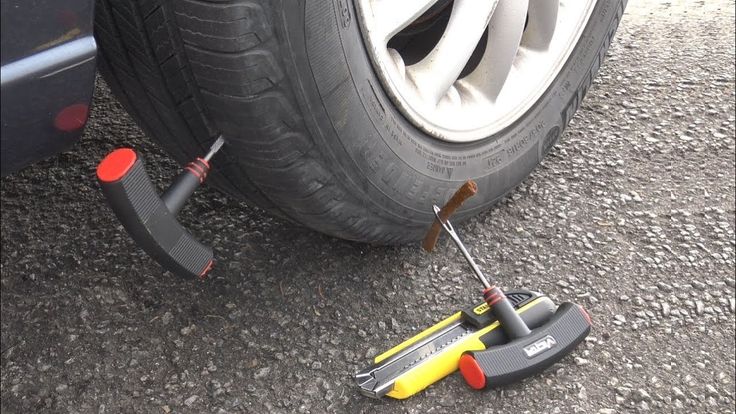 5 atm. reduces the life of tires, especially the side profile. In addition, weak tires lead to an increase in fuel consumption, as they are less resistant to rolling resistance. Along with this, under-inflated tires are prone to the formation of hernias. And yet, a weak wheel harms the suspension, not to mention the deterioration of the car's directional stability on the track.
5 atm. reduces the life of tires, especially the side profile. In addition, weak tires lead to an increase in fuel consumption, as they are less resistant to rolling resistance. Along with this, under-inflated tires are prone to the formation of hernias. And yet, a weak wheel harms the suspension, not to mention the deterioration of the car's directional stability on the track.
Train yourself to look after the condition of your tires. A simple operation to inspect the wheels and measure the pressure with a pressure gauge can delay the purchase of new wheels for a couple of seasons. And this is a significant savings in the personal budget.
Almost every driver at least once faced with the problem of a flat tire. As a rule, this unpleasant breakdown happens at the most inopportune time. Of course, if you have an electric or manual pump on hand, you can quickly inflate a flat tire. What to do if there is no suitable tool, the spare tire is left in the garage, and the pump is broken - call a tow truck?
There are better ways to quickly inflate any tire in the field.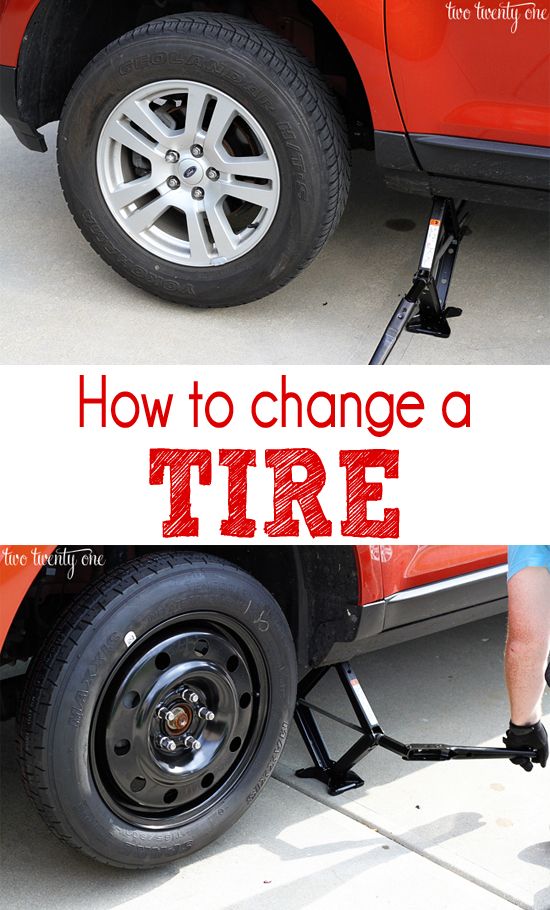
A flat tire can be filled with regular petrol or gas. This process is called "explosive pumping". If you use it carefully and according to all safety rules, you can “pump up” even far from civilization.
Important! Remember that gasoline and gas are highly flammable substances. One careless move and the whole car could go up in flames. Make sure there is no dry grass or flammable objects nearby.
The principle of operation of "explosive pumping":
Please note! Use a small amount of gasoline. If poured, the tire will simply catch fire. Up to 50 g of gasoline will be enough for one wheel. It should be based on the size of the tire, for small ones, 30 g is enough.
Up to 50 g of gasoline will be enough for one wheel. It should be based on the size of the tire, for small ones, 30 g is enough.
If you are using this method for the first time, it is better to limit yourself to ethyl alcohol, it is also highly flammable, but is considered safer. Some desperate drivers use gas, but it is very dangerous to work with it, as the gas burns quickly and can be ignited by any spark.
Note! Always keep a fire extinguisher close at hand when using "explosive" pumping. The wheel must be removed from the vehicle and moved to a safe place.
If there is no time to change the wheel, or the wheelbrace is left in the garage, you can use the option with pumping from the spare tire. The procedure is as follows:

Such a simple method can help out in any situation. After the end of the pumping process, simply disconnect the hose and close the nipple with a cap.
Each fire extinguisher has enough capacity to easily fill any tire. However, before starting the process, you need to prepare. You can't do without a special adapter between the inlets!
It is best to carry the adapter with you in the trunk. You can make it from a hose from an old compressor, which will fit exactly in size to the fire extinguisher inlet.
How it works:
In just a couple of minutes, you can inflate a wheel of any diameter and volume in this way. However, such a tire cannot be used for a long time. Due to the strong acidity, rubber can suffer, so it's best to go to the nearest workshop right away so that the experts fix the problem.
Due to the strong acidity, rubber can suffer, so it's best to go to the nearest workshop right away so that the experts fix the problem.
This method is not exactly related to pumping, but with it you can at least get to the right place and pump it up there, or change the wheel. If the car has a regular rope, it will easily fit for the “shrinkage” of the wheel. You just need to tie the tire along all the tread lines and pull it off well. After fixing the rope on the wheel, you can drive several kilometers without fear for the condition of the disk.
Of course, this option should only be used as a last resort, when there is no other way to fix the problem.
With a little wit and skillful hands, you can get out of any situation. However, it is better to always carry a spare wheel and a working compressor with you, with which you can pump up a tire. Experts also recommend the use of special tire repair kits, which will allow repairs to be made in the field.